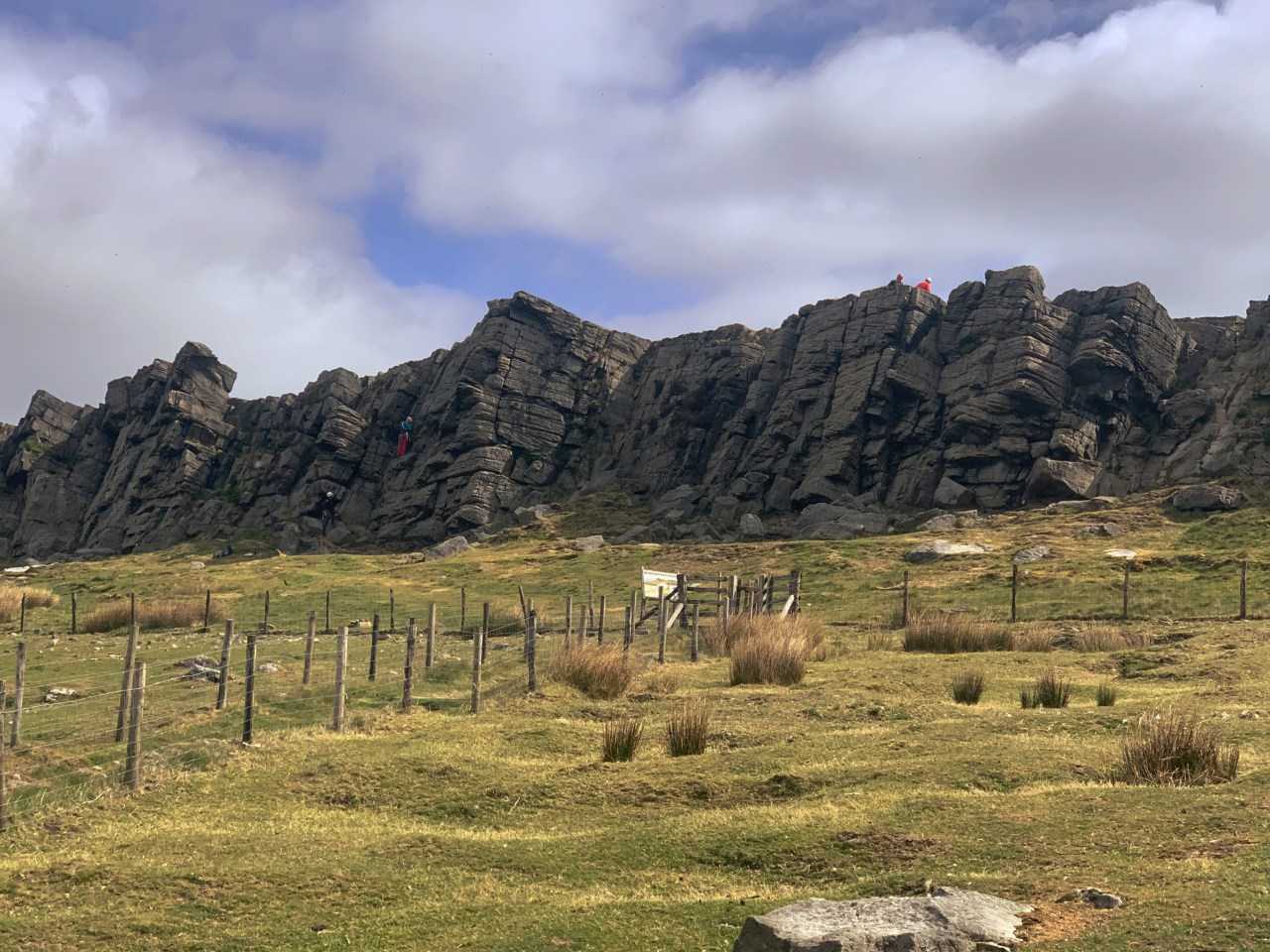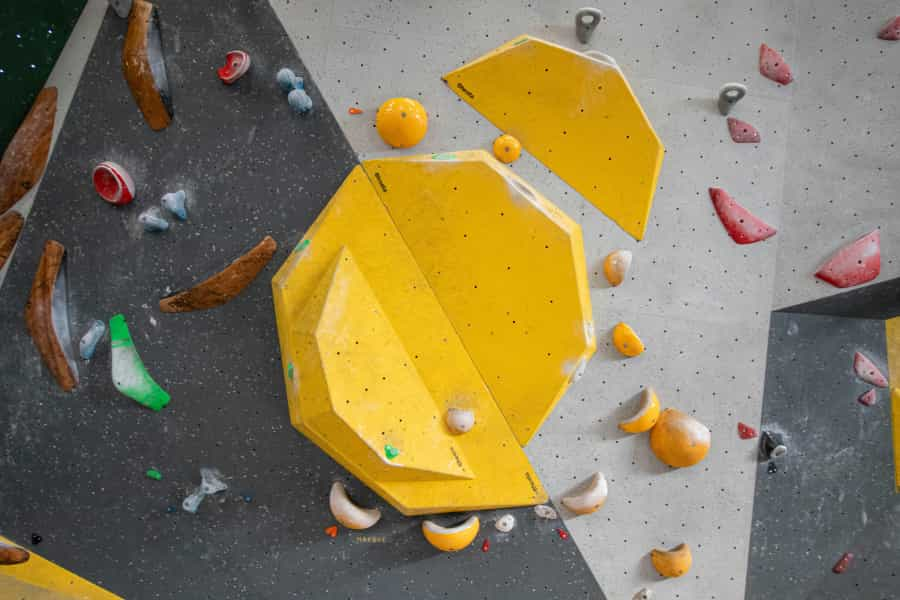Climbing in the Peak District

With a wide range of crags, cliffs and boulder fields, the Peak District National Park is a great place for climbers to explore, regardless of experience level or favoured climbing discipline. The national park has it all, from sport and trad climbing to bouldering and indoor climbing gyms. As well as its unique geology – the White Peak area is predominantly limestone, while the Dark Peak is a mix of gristone and sandstone – the Peak District also has a well-established climbing community who are well-known for their friendliness, so get out there and make the most of what this fantastic area has to offer.

Bouldering in the Peak District
Bouldering involves staying at a lower level and is great for those who enjoy rock climbing but aren’t so keen on heights. Rather than relying on ropes (although you’ll often see them used, with a crash mat for safety), boulderers use their hands and feet alone to navigate boulders or walls both horizontally and vertically. The Peak District has lots of places to enjoy the sport, many of them beginner-friendly options.
Local tip: As boulders are often spread out, bring a guidebook or topographic map to make the most of what’s on offer.
Burbage Valley
The Burbage Valley climbing area is one of the most popular in the Peak District. This large area has a wide variety of bouldering opportunities, but beginners will find more options in the southern part of the valley, where there are several easier slabs you can practise on. The northern part of the valley has better parking facilities (most of the time it's easiest to walk from the northern car park to the southern area, which takes about 20 minutes) and a range of more advanced bouldering problems.
After bouldering in the valley, stop off at the popular Fox House Inn for refreshments. The pub is located in the southern part of the valley and is well served by buses to and from Sheffield.
Stanage Plantation
This established climbing spot is located just underneath Stanage Edge and is a great place for intermediate bouldering. Located near the village of Hathersage (which has several good pubs and shops where you can pick up snacks and basic supplies), this gritstone boulder field has some of the best bouldering problems in this part of the country.
Like the Burbage Valley, Stanage Plantation is within easy reach of Sheffield, which means it can get busy here. If you're a beginner, take the waiting in your stride – you can learn a lot by watching how other climbers tackle the trickier routes.
Curbar Edge
Curbar Edge is located further south than the two other bouldering locations on this page and is situated between Eyam and Baslow. The area has a reputation for high-quality but tough bouldering and is therefore recommended for upper-intermediate or advanced climbers. There's lots to choose from here, but most bouldering is located at the areas known as The Cioch, Tree Wall and the Black Nix Wall – generally there aren't too many other boulderers around. Just above Curbar village there's a car park (pay and display) which is a short walk from the area's bouldering problems.
To get a sense of what climbing here is like, check out this video on YouTube.

Sport and trad climbing in the Peak District
Sport climbing involves climbing routes equipped with pre-placed bolts where ropes can be inserted. Trad climbing is more adventurous, requiring climbers to place their own protection gear (known as cams and nuts) into cracks as they climb. While it's sometimes seen as the purer form of the sport, it also comes with greater risks than sport climbing.
While some Peak District spots are better known for sport climbing and others for trad climbing, in practice you'll often find both kinds of climbing side by side.
Local tip: If you’ve never tried roped climbing before, book a course before heading out to one of these locations. The basics (tying in, belaying and correctly getting into a harness) are simple to master but important for your safety.
Trad climbing
Stanage Edge
Possibly England's most popular trad climbing spot, Stanage Edge is four miles long and has over 1,000 possible routes up. While it's usually busy (stay away from the southern 'popular end' if you want to avoid the crowds), the scale of this place means there's always room to get climbing. While the routes don't go up to the great heights you may see elsewhere, they have lots of character thanks to the local geology.
Froggatt Edge
Froggatt Edge is another popular crag for trad climbing. This pleasant area is shared with walkers, who can often be seen on the path that runs along the top. The main cliff faces the sun in the afternoon, meaning the rock is generally dry. Parking is available close to the nearby Grouse Inn; there's also a National Trust car park slightly further away.
Millstone Edge
Millstone Edge is a former quarry located in the popular Hope Valley. With smooth walls and fierce cracks, it's a challenging but attractive place for trad climbing and is home to several popular routes including the well-regarded Edge Lane and Master's Edge. Due to erosion, some of the rock can come loose, so wearing a helmet is recommended. Note that access restrictions may be in place if certain birds are nesting here – this is made clear by signs on display during nesting season.
Sport climbing
Raven Tor
A sport climbing spot of national importance, Raven Tor near Tideswell is a challenging place to climb (the most popular routes are all graded 7b and above). All of the routes here are extremely technical, with most partly on overhanging rock. The crag is a sun trap, meaning the rock face is generally nice and dry, but it can get hot here in the warmer months (bring layers that you can add and remove easily).
Horseshoe Quarry
Horseshoe Valley near Eyam is home to a large number of intermediate sport climbing routes (most are graded between 6a and 7a, with a few slightly easier options too). Partly owned by the British Mountaineering Council, access is freely allowed throughout the year (note that the quality of the bolts on the non BMC-managed areas may be less good). There are also a few fairly straightforward trad routes here, but the focus is very much on sport climbing. There is only space for about a dozen cars at the quarry entrance, so make sure to arrive early.
Harpur Hill Quarry
For lower-grade sport climbing, Harpur Hill Quarry rivals Horseshoe Quarry with its range and quality of climbing routes. The bolting is generally of good quality around the entire quarry, and access is easy thanks to this spot's location on the southern edge of Buxton. The quarry is high up and it can get colder and windier here than in some other places. While the adjacent lagoon is very pretty to look at, don't venture into the vivid blue water – the basin is very alkaline because of historic industrial activity and it's not safe to swim in.

Indoor climbing in the Peak District
Good weather can’t always be guaranteed in the Peak District, so here are a few indoor climbing locations that may also be of interest. These are also great places to learn how to climb or hone your skills – many centres organise courses and supervised climbing sessions to help you progress in a safe and supportive environment.
-
Adventure Hub, Hope Valley – a small but friendly climbing gym in the heart of the national park
-
Peak Climbing Wall, Leek – a modern Staffordshire climbing wall built for climbers, by climbers
-
Substation, Macclesfield – a large bouldering gym with on-site vegetarian café
-
The Foundry Climbing Centre, Sheffield – the area’s largest indoor climbing centre, with classes available and all styles of climbing catered for
Accommodation in the Peak District

Whether you want to spend your entire holiday within walking distance of a crag or just fancy trying out climbing in the Peak District, Pitchup has loads of local accommodation to help make it happen.
Our collection includes a wide variety of tent pitches, caravan parks, cosy lodges and plush glamping stays across the length and breadth of the national park – and many of the options are just a short walk or drive away from the climbing spots mentioned above.